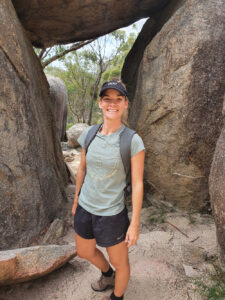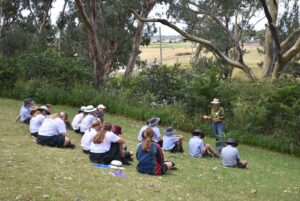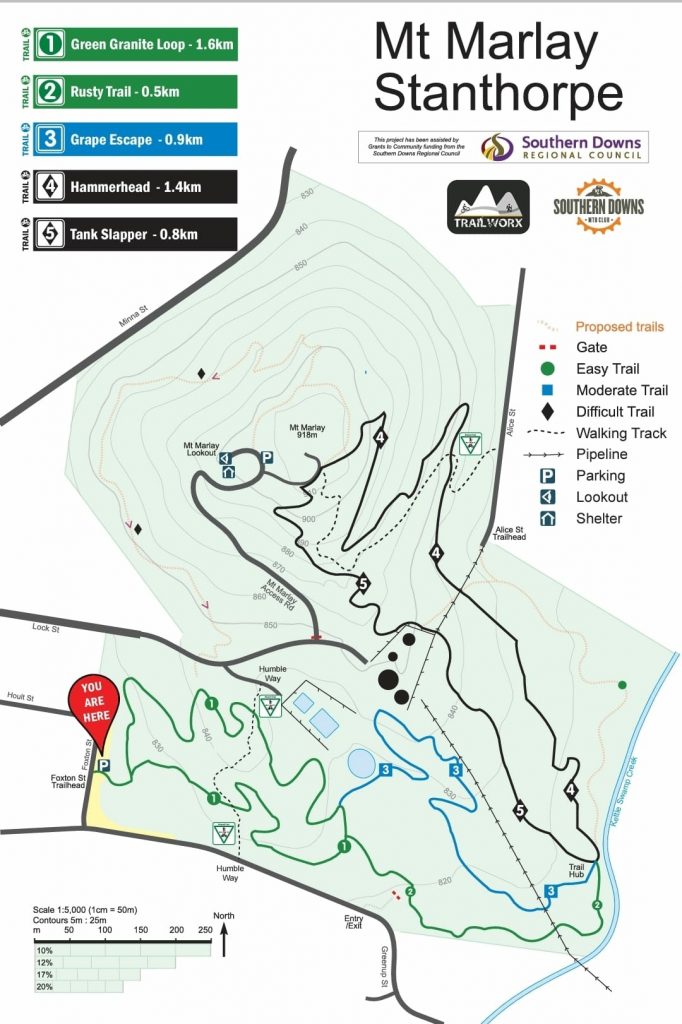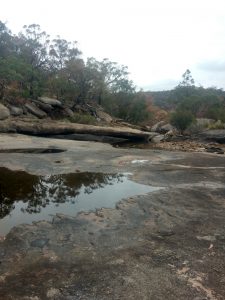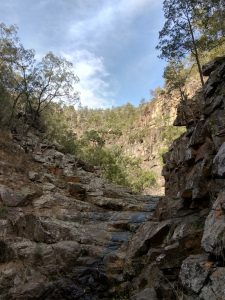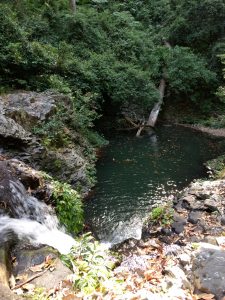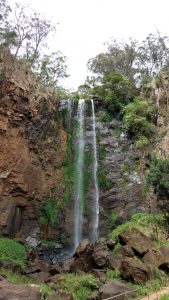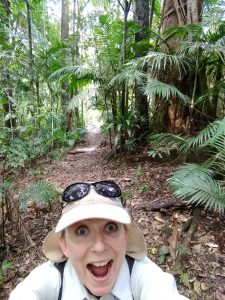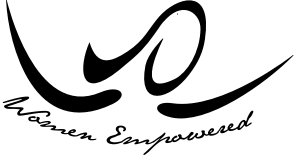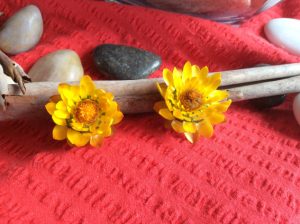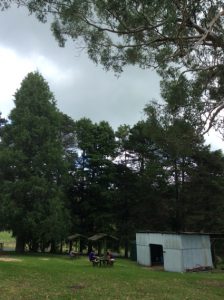CONNECTION TO YOUR COMMUNITY
Transcript from the podcast “Speak Out Loud: Stories of Strength from the Southern Downs”
SEASON 2: EPISODE 1
GUEST: Marco Gliori, Councillor for Southern Downs Regional Council; Performance Poet
PUBLISHED: 7th February 2022
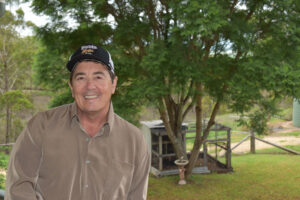
[00:00:00] Marco: There’s a voice to tell a story that could stir a restless soul
There’s a voice to call the final pass or toast a winning goal
There’s a voice that seems to lift the horse and rider past the post
Some voices whisper wisdom and some cannot help but boast
I have a voice for poetry though some dispute that claim
The rhythm rattles through me and I squarely place the blame
On the contours of the landscapes that caress me down the track
And the voices of the characters that echo when I’m back.
Kathryn: Today’s episode is a really fun one with Marco Gliori, chatting all about the things he loves most – the arts, culture and connection to family and community. It was an immense joy to record this episode with Marco which you’ll understand as you listen in to our conversation. Marco has a wonderful knack for inspiring others by sharing his optimism and enthusiasm. Regarded as one of Australia’s premier performers of bush verse, Marco is also a councillor for the Southern Downs Regional Council. In this episode, Marco shares not only his original verse, but also his thoughts on how individuals and communities can get through tough times.
[00:01:32] Kathryn: Hello Marco. It’s great to have you on the podcast
[00:01:35] Marco: Great to be here Kathryn
[00:01:38] Kathryn: Marco could we start this episode by introducing you. If you could explain to our listeners what your connection is with the Southern Downs Region.
[00:01:49] Marco: Thank you. At the moment I’m a councillor on the Southern Downs Regional Council. I was born here in 1963 at the Warwick Base Hospital. And my father is the reason we arrived in Warwick. He was an Italian migrant who came over after the Second World War and got a job as most Italians did at that time concreting. And they sent him to Lake Tinaroo in North Queensland to work on the irrigation up there. He met my mother Audrey a dairy farmer’s daughter whose farm now lies on the bottom of Lake Tinaroo. And they fell in love and took off down through Queensland working at Moogerah Dam, Coolmunda Dam, Leslie Dam. They had a child at every dam I might add and I was lucky enough to be born while Dad worked at Leslie Dam and we lived out there for the first two years of my life at Leslie Dam. One of the earliest memories I have is from that time living out there. I must’ve only been two or maybe three and running down the slopes and leaping into the Sandy Creek into the arms of my father who was squatted in Sandy Creek with all his work mates and the families with a stubbie of beer in one hand and a rollie cigarette in his other but he still managed to catch me. And they were rejoicing in the water being released from Leslie Dam for one of the first times I guess and flowing out down through Sandy Creek and out into the black soil plains. It was a really joyful time, a happy time, a hopeful time. And now when our dams are full as they are now that memory comes back to me. It’s an everlasting memory and a very joyful one. I grew up in Warwick. We moved into town after the dam was completed. And I went to Central State School, Warwick State High School. I had no real plans for life. And then Dad actually passed away two weeks before my 18th birthday. And the last thing I remember him saying was “You got to get a good bloody job. You got to get a good bloody job.” And of course he meant a career. So after Dad passed away I applied for everything that looked like an exciting career – the army, the air force, the Navy and I was actually accepted into the Queensland police force. So I had 10 years in the Queensland police force. So I attained the rank of Detective Senior Constable and had a great career. I really did enjoy it but there was something else that had me chomping at the bit to give a dream a go. And my dream was spoken word poetry. My father was a craftsman and I believe that while I wasn’t a craftsman like him, someone who could chisel a 22 rifle out of a piece of pine timber, I did have that ability to be tenacious, to be persistent, to take an idea and mould it. And I did that with my poetry, and my mother, by singing country music around the house, something as simple as that, sowed in me the rhythm of the ballad. So I left the police force and didn’t have a clue how I was going to do it but started becoming a performance poet as my job. And I was lucky enough to be contracted by the Queensland and Victorian Arts Councils. I performed over 3000 performances for them over a decade. I travelled on the road with my family. And this of course led into many more opportunities – spoken word festivals, the Maleny Folk Festival which is now the Woodfordia, the Tamworth Country Music Festival, the Outback Festival at Winton. I was flying around the country doing after-dinner guest speaking spots with my original poetry and it was just a wonderful way to earn a living. And I did that for 30 years and after 30 years on the road and my children had grown up I decided I needed to stay at home for a year. And it was during those first few weeks where I just started putting my feet up and thinking I don’t know what I’m going to do but I’m going to enjoy it, people started saying you should run for council. You should run for council if you’re here and you’re staying home. Oh how ridiculous I have no political aspirations. I have no political agendas. And after enough people tell you that you think “Well why not give it a go.” Something I was never afraid to do was step off the edge. So that’s why I arrive at the moment as a councillor for the Southern Downs Regional Council and loving my interaction with all the community and especially the arts and culture community.
[00:06:00] Kathryn: You would have seen the region go through various droughts and other natural disasters and other challenging times, and the region in particular more recently has been on a recovery journey following the bush fires that we had in 2019 and 2020. And there was drought before that. And of course since then we have had floods and we’ve had mouse plagues and we’ve had the COVID pandemic. Recently the Southern Downs Regional Council partnered with the Queensland and the Australian governments to celebrate the resilient spirits of this community. And we developed a photo exhibition called Hope and Growth and the images and the stories from that exhibition celebrating the resilient spirit have been on display at various locations across the region where you also performed one of your original verses that honours volunteers which I think was just so apt. There are so many volunteers involved in managing and recovering from disaster. I’m curious about when and why did you write that poem Volunteers?
[00:07:15] Marco: I had seen so many volunteers on the road travelling around doing festivals, events, places that had experienced bush fires, floods. They continue to be the inspiration within the community to create community, something to be proud of and to be proud of because they don’t require any recognition. I remember about 20 years ago we had a bushfire right here beside my place. It had started down in the gully with two electrical wires connecting up in the trees that were growing through the trees at that stage. It wasn’t on my property but it was at the bottom of a gully that led to my property. And I was in town one afternoon. No one was home. They were all at school and at work and I was at home, ducked into town, and driving back I saw my whole mountain in a big cloud of of gray smoke. I thought “What have I done? I’ve left something on.” I thought my house was gone. It was that ominous driving up towards where the gully started and it’s 1.2 kilometres from the road to my house. And that was a very long 1.2 kilometres but as I begin accelerating to the bottom of the gully I realised that the whole gully’s ablaze heading up towards my house. I didn’t know the wires had touched and that had caused it at that stage but about 30 meters up where it is, it’s a road but it’s literally my driveway into my house, I saw 20 people with wet bags. I saw a D2 dozer driving out of my driveway. This fire had only just started. I’m thinking “Where did these people come from?” And I was so lucky. They were actually having a firefighting course with the Hermitage staff right across from the fence from where I live at the state government research station which is closed at the moment. So I was just so lucky and I realised that these are the people that go out when the fires start, when the floods start and they they are so happy to just, they were so humble about helping me, but that fire burned for three days in my gully. The barrier that they formed, the safety barrier with the D2 dozer, the firebreak, saved my house from burning and my kids cried literally for days. I had three little girls at that time. They’d met all the wallabies and echidnas and the birds that lived in that gully and to just see that smouldering for three days, the tragedy, the psychological stress that that can place on children, families that are surrounded by fires and the aftermath is a devastating thing for a community. And to have this exhibition gave those people who were just on the frontline at the time the opportunity to stand back and relive that feeling of the ominous coming of the fire, the urgency there. And they could actually talk back then through their experiences in a calm, reflective way and say wow I didn’t realise it looked like that. So we had people on the frontline, the photographers, snapping history. And that is what’s important with an exhibition like this. Not just that other people get to share but those who were so entrenched in the experience get to sit back, breathe deep and say “How lucky were we? What have we to be grateful for?” And of course the great thing is we were grateful for the volunteers who step out there and save us. So this is that poem:
When your weary hands are trembling and the load appears immense,
When trouble like a Terrier comes scratching at your fence,
When waves of devastation flush your spirit from its core,
And common sense would have you kneeling down in very awe.
Watch them come with helping hands,
Rolling forth like marching bands,
Against the odds they’ll persevere
And stand their ground to Volunteer.
From somewhere west of nowhere, by the truckload they’ll appear.
Leaping down to fight beside you, at your shoulder, by your rear,
Armed with all the best intentions, firing gestures of goodwill,
Then retreating to the trenches when the spotlight starts to spill.
They couldn’t give two hoots for fame.
Their ever-ready boots are game.
Time is wasting! Crank the gears,
Saved again by Volunteers.
My Mother knitted jumpers in a cake stall down the street,
And volunteered a smile to every person she would meet.
To her, their grateful eyes were worth a thousand Souvenirs,
For twenty years she sat there with her mates the Volunteers.
No matter where their anchor lands,
They dedicate their helping hands,
For hands are valued more than cheer
When someone needs a Volunteer.
Now all around the world we see the troops are checking in,
To lend a hand as old Miss Fortune tries her best to win,
And should the future swallow us, the message will be passed
To start evacuating and, one guess who’s going last.
As the boats that harbour rich and poor
Go scrambling from each fatal shore,
The final hand to cast them clear
Will belong, no doubt to a Volunteer.
[00:12:26] Kathryn: Thanks Marco it’s a really powerful poem. I’m curious do you know how many times you’ve performed that one?
[00:12:33] Marco: I think the first time I performed it was at a cancer fundraisers breakfast – The Big Morning Tea in Toowoomba. And of course the organisers there said “Can we have a copy of that?” because my mother had that about her character. It wasn’t something that you went out and did. It was something that was ingrained in you from generations who had seen war time, who had experienced almost starvation in some areas, who had gone to school with dripping on bread you know as their lunches. That was their school experience. And here they were just instilling that in my generation. And I think sometimes, I wonder, if my generation has had it so good, so lucky in this fortunate, prosperous time in Australian history, that sniff of wealth for the working class of mines exploding in big wages for inexperienced, unqualified people that we’ve had this great moment in history where where we’ve been surrounded by abundance, a smorgasbord of opportunity. And now with COVID maybe it’s time for us to stand up as a generation, to refuel the CWAs, to rejoin the Lions and the Rotaries and the Apexes, to get out there and activate as is happening with our country halls, with the great Festival of Small Halls shows that have happened recently. That wasn’t just shows for entertainment. That gave an opportunity for the rural fire brigade to raise money, for the local schools to set up and raise money, for the local community to realise why those halls were created and how valuable they were in war time, of times of tragedy, communities would come together. And now when we stay home where we often don’t go out we have everything delivered to us whether it be on television, we have Facebook, we have delivery from restaurants. Maybe it’s time to get back out there in the community and let people know that we’re there to support them.
[00:14:33] Kathryn: It’s really interesting. The current research from more recent natural disasters is saying that one of the most protective factors that we have is to be involved with our community. And that’s backed up by what you’re saying there Marco, that historically people were really involved. That was part of their normal every day routine or just what they did getting involved with clubs and helping out. And certainly when we look at, for example the arts, which is another way of getting involved in the community, there are some benefits there for people’s wellbeing, being involved in various ways. I’m wondering if you can comment on that. As a whole community having the arts as a resource can be useful but also for the individual.
[00:15:27] Marco: The art galleries, our two regional art galleries, Stanthorpe Regional Art Gallery, Warwick Regional Art Gallery here, it became a sanctuary for me during COVID and during my early days as a councillor trying to grasp with all the political strategies, with all the information you’re asked to go through and work out some pretty important decisions. It was great to walk into those galleries and meet my creative workmates on a completely different level. I’m no visual artist but they became a sanctuary. And I think that opportunity exists for everyone in the community. If you’re having a tough time, if your kids are sitting around home worrying and asking you those questions, take them to a library, take them to an art gallery. Have a look around, see how you feel after 20 minutes in there. It does soothe the soul as it does the artists who create them. While you’re there, ask them about workshops, ask them what’s available for the kids. We have programs coming up in both art galleries for students, for young children, for students from headspace are allowed to come in and do some wonderful creative workshops that release emotions. And this is what it can do for you. When you go to your libraries ask them about the storytelling workshops. Ask them if there’s any poets and storytellers coming to do workshops. There’s an opportunity for you to tell your story. And this is what’s so important, I think, in times of adversity, is that you as a community member know that your story is being heard because they all matter. Every story matters. And once we all connect with each other’s story we have empathy. And once you have empathy you can come up with common sense solutions to soothe your society. To say “Well what do we need, really?” We need food. We need shelter. We need mateship. And that’s what you get from your volunteer groups. That’s what you get when you go into an art gallery community. I’ve always found it welcoming, wanting to talk with you about what’s happening from a visionary perspective in your community. What ideas do you have with recycling? What ideas do you have for your landscapes and waterways that sustain us? Do you want to just go out and clean by the Condamine River or Quart Pot Creek? Do you want to go to Artworks at the railway station in Stanthorpe and join in with their workshops or are you retired? There’s something there for everyone. Do you want to act and sing a song? Go to the Stanthorpe Little Theatre when they have their open nights. Warwick doesn’t have an amateur theatre group at the moment. That’s something I think that we could do up this end of town. And I think that once you begin to do that, once you get folk clubs back in the pubs, once you get school groups have their string ensembles or their bands playing in the art galleries, those sorts of things bring in the fathers and the mothers, bring in the students who are friends of those playing, bring your community in who just like seeing young people express themselves. And there can never be enough of that. And the one thing we don’t want to happen at the moment with COVID is that we become so fearful that we forget how to do that. And I think that is one of the things people worry about, “Well I’ll just stay home.” But in actual fact we’re going to have to go out eventually. So let’s be prepared to set that example that is about empathy, that is about sharing, that is about creative workshops, mental health workshops. Just discussing how you feel and if there’s an opportunity or your local hall to turn up because they might have a rural perspective with characters who are isolated on farms. Go along. Just sit there. You don’t have to say anything but it’s amazing how many people hang around afterwards and just keep talking and have that cup of tea because they’ve made the effort and you have got to make the effort.
[00:19:24] Kathryn: I think you brought up some really really important words there. There’s creativity, connection, understanding, empathy, being heard – because sometimes we think when we go to an art gallery or to a workshop that it’s about hearing or seeing somebody else’s work but there’s also that opportunity for our own expression to come through which I think is really important too. So it sounds like there are lots of opportunities across this Southern Downs Region for people no matter what age they are or what interests they have to to get involved in some way in the arts through some public groups and public opportunities. But perhaps even if they’re not feeling comfortable to get out and about there might be some creative ways for people to get involved with the arts in their own home or perhaps with a small group of friends.
[00:20:21] Marco: Yeah I mean there I was just telling you before we started this interview, I gave you a bottle of my homemade mango chutney. That for me is creative. I never sit down and make the same recipe anytime. I go to Sam’s fruitery down on the way to Stanthorpe and I get boxes of fruit or I might go to another local produce place and buy stuff that I, and I just come home. And for me it’s always a mixed match of different flavors and spices. I love doing that and what do I do? I take those bottles out and give them to people. I give them to people at art gallery launches. I give them to people like yourself Kathryn who share, are willing to share their stories and capture the stories of our Southern Downs. That in itself is an expression of interest in other people’s lives. We have people who go out and mow the verges of of our footpaths, who mow the sides of our roads. They do that simply because they’ve got a tractor and a slasher. They don’t have to do it. They’re often not compensated for it. They don’t do it because council can’t do it. They do it because they want to show a pride in where they live. I remember doing a story some years ago on stage in Brisbane that involved an Aboriginal mate of mine by the name of Dusty who was a radio announcer in Brisbane. And he was there in the audience so I thought “Oh there’s Dusty”, so I told this yarn about him and me going hunting in the Gold Coast Hinterland. And it had a one-liner at the end and everybody laughed including Dusty. As we’re having a beer after the show Dusty said “Oh that was a great yarn ya funny bugger.” And we were just laughing and he said “But you know that couldn’t have been me down there on the Gold Coast.” And I said “What do you mean?” He said “That couldn’t have been me down the Gold Coast, huntin’ down the Gold Coast.” And we’re laughing but I couldn’t figure out what he meant. I said “I don’t get you, what do you say?” And he says “I wouldn’t have been hunting down the Gold Coast Marco. I’m a river Murri. I’m from Charleville.” And he was so proud of where he came from and he had no doubt where his soul and spirit was attached to. I didn’t grow up with that. I floated down the Condamine River on a tractor tyre but my education was about the animals that lived at the river. But there was no obligation placed on me as a human being to connect myself to the landscapes and the waterways that sustained me. Those stories of Tiddalik the dreamtime frog, beautiful colourful stories that Indigenous Australians told around the campfires of this country under the canopy of the million star motel for thousands of years connected them in a spiritual way to where they lived. And I wonder how many of us can truly say we’ve found that. And Dusty, in that with his great sense of humour, in just a passing comment didn’t have to convince me. It was so obvious that he was always going to be connected to the rivers of Charleville cause that’s where his people came from. And as our young Anglo Saxon society grows and evolves I hope that we find that because if we don’t we’re going to be in real trouble. When I came back after that, hearing that from Dusty and just thinking “What do I know about this place where I live really? Why aren’t I bragging?” I brag it here.
Yeah I come from Warwick, you know Warwick.
Old people retire there.
Young people can’t wait to leave there.
And some actually do.
Up the street boots wearing cowboy hats climb into big cars and dirty utes.
That smell of oil, cattle and KFC.
Tough teenagers with skinny elbows stuck out the windows of 83 Geminis
Cruise past the shoppin’ centre shoutin’ “Hey boofhead” to a lucky mate.
Chattin’ up two Grade 10 babes
Fiddlin’ with that cool silver neck chain hot off the $2 stand at Silly Solly’s.
That was my teenage years. I remember that so clearly, just cracking laps up and down the street, playing footy. But there’s another part to our existence that I think when we sit in these quiet moments that we’re having through COVID, when we have time to reflect, we should think about who we are, where we come from and how do we connect to the planet. How do we connect to the Southern Downs? When I came back from working with Dusty I wrote a poem. I still remember the first verse:
I was born beside the Condamine
She is my dreaming place.
Within me deep her stories flow
She’s the river I embrace.
Cascading west from the Great Divide
Across the Darling Downs
Over waterfalls, through sandy creeks,
Meandering past towns.
Her vital veins injecting life
Where the morning’s misty air
Serenely cloaks the farming land
And houses cluttered there.
And Mother Nature’s weary voice,
I’ve heard her weep and pine
Whisper solemnly to thirsty humans
By the Condamine.
That was a poem that I wrote after talking with Dusty but I brought it home and then got the kids from Central State School to recite it on the banks of the Condamine River. And you can actually go online and watch them reciting that. So for me that’s another way of sharing your creativity with the community. You might write something, it could be a play, a song, a poem.
It’s where you’re from that counts old mate
The highway home, the boundary gate
That street your mind meanders down
The view by night of twinkle town
That sparkles in your very core, no matter where you wash ashore
What fuels your blood you can’t deny
The rivers flow, the rumbling sky
Granite rocks, the harsh terrains
Ranges rapping black soil plains
Cascading falls in a sandy creek
That murmurs every time you speak
That was a poem called Pride of Place and I was asked by Ron Bellingham, the former mayor of Warwick, when I was asked to write a poem pre-amalgamation that remembered where we all came from. And that was his phrase – Pride of Place. And I’ve actually adopted it. It’s a wonderful way to look at where you live. Do you have a pride in the place where you live?
[00:26:36] Kathryn: So that sounds like that’s about connection to place, the geography, the natural world. And there are also other aspects of the region that will help people to do that, will support them to do that such as the local festivals and the local resources and the community events and the people connecting to each other.
[00:27:00] Marco: Yeah, you can join the Landcare group tomorrow. Go and join and you will know exactly what I’m talking about. They will take you to all those places that are going to connect you to where you belong to right now. They’ll take you up into the mountains. They’ll take you to the rural places that are growing crops that want to make sure that the wrong weeds are taken out, that makes sure the environment is healthy. And they do it from not just a natural perspective, a nature loving perspective, but an economic perspective. You can do it with the different festivals and events we have that are often in beautiful places aren’t they? Like where do we have them? We have them in parks. We have them where people want to get together under a tree and by riverside. And we have that ability here to celebrate our seasons through events and events are essential to the way we live, the celebration of the harvest always comes with the events. The events industry, the arts and culture industry has had COVID come down on it like a guillotine. People don’t realise how important the events in culture industry, not just the people on stage but the backstage people, the people who own the tents where the performance has happened, the hospitality industry that suffered, the local accommodation houses that are suddenly empty and have to pay staff. There are so many things that go along with this art and entertainment industry that we’ve created and they often don’t get the recognition because they’re not a shopfront, they’re not a farm turning up with a truckload of produce. They just walk on stage and do what they do. But what you’ll find in times of adversity like COVID, the arts and entertainment industry will often produce its best work. And I think coming out of this COVID when we’re all back on deck we will value them more than ever. But don’t forget them now because I can assure you many of my friends who have mortgages, who are just struggling, are finding it more and more difficult to get up off the canvas. And the way we react now to what we’re going through, which is the great battle of our time, I mean my father lost millions in his generation, my mum, through two wars, and this is our great battle across the planet. How we react to this as a society will see how our children look upon us in history and who they become. And if they can be inspired by this rather than see us talk the world down, be negative, then we have hope that they will see the meaning of trust, resilience and all those catch phrases we use. Well we might have to really get busy using them, experiencing them, showing them off and letting kids know that it’s okay. This will be part of history one day and let’s hope the other side of what we’re experiencing with climate change, that that would be part of history as well. But we need our generation who has had so much prosperity, we need to knuckle down and get busy because that’s what happened after two world wars. They were just told to knuckle down, get busy. And they were keen to get on living because they’d seen so much of dying. And we haven’t seen that yet. We have been fortunate that we’ve had the facilities to manage this COVID pandemic better than past generations. How many million died with the Spanish flu? But we need to also remember that we’ve been in a very fortunate few decades especially in Australia, not across the world, but in Australia, and we, as a country, can set an example as we have done so far I believe with the way we react. And we need to give that example to our kids to take into their future so they can say “This is where I’m from, this is what I believe in, my parents did so much for me.” Like we talk about our generations, they went to war, they sacrificed, they built a nation back from a war torn world, And they built us up into something successful, inspirational around the planet. Let’s see if we can do the same thing.
[00:31:24] Kathryn: And I think when we look at the bushfire recovery and the whole cycles that we go through with natural disasters, just using the bushfire as an example, there’s devastation and we can feel hopeless. We can feel like this is never ending. Similar with the drought. Those two events were very closely connected of course. And through that photo exhibition that I mentioned or that we mentioned a little bit earlier, we can see that there is re-growth, that things do change. Things don’t stay the same always. But there are things that we can do to invest in that recovery and to make that more successful. And it sounds like what you’re saying with COVID at the moment is there are things that we can do to to invest in that recovery as well for ourselves, for our communities and for our world. And thinking about the arts in terms of that COVID recovery journey as well, that we can look towards times with some optimism, we can invest our time and our energy and our hopefulness into when the Jumpers and Jazz in July festival will be a really large vibrant event or perhaps it will be a little bit different, the Snowflakes in Stanthorpe Festival, the Apple and Grape Festival. And of course there are lots of other festivals that happen across the region as well so I’ve just mentioned a few of them.
[00:33:08] Marco: I think that what we can do is enjoy the quiet moments and we’ll often be inspired not by something grand but by a gesture, a moment where somebody’s kind to you, where families are opening their hearts to other families who might be suffering and those things like you said, words you used there like optimism, they’re pretty big, they’re pretty big character traits if you can have them in times of stress. And the community is always inspired and they’ll ask “Well how can that person be so optimistic?” And if they ask the question, they’re asking the question of themselves “What can I do to be optimistic?” Well maybe I can go out and volunteer. Maybe I can turn up and create something in an art workshop or pop down to Artworks Granite Belt, pop into the Warwick Art Gallery. Ask them what’s coming up, what can I come along and have a go at and create? And it’s amazing once you focus on the little things, the big things take on their own momentum and they just become as I said, part of history. The event mightn’t happen this year. It will happen next year. And that is optimism. That’s just saying “Well not today but tomorrow.” If farmers have lived with it all their lives. They go “Oh I was gonna plough that paddock today, well look at that beautiful rain. I’ll just have to sit back. I can’t do it. It doesn’t suit me but I’m going to have to put up with it. I might want to sell them cattle but the prices aren’t right.” So I mean this is rural Australia. we We deal with those things all the time and that’s why as you can see people are flocking to rural Australia. You can’t buy a house around here at the moment because they want that pace. They want that lifestyle. They want that little community that we’re talking about going out and catching up with people, riding your bike around the street, going to a local park that’s less than 2, 3, 4, 5 minutes drive anyone from anywhere in town. They’re pretty exceptional attributes for a region to have. We’re very lucky.
[00:35:15] Kathryn: Marco what keeps you optimistic?
[00:35:20] Marco: Well I think you can only go with what’s around you and that’s family. I try to do my best with my family, to keep them close, to keep them optimistic. I think if you inspire those closest to you it might trickle out. If you have mates that are down, go and check on them. That keeps me optimistic because you’ll always find someone who’s doing it worse off than you. It doesn’t take far to look. What keeps me optimistic is seeing the volunteer groups at small halls who are putting on events, who are doing the little things right and saying “We’re happy, we had 80 people here tonight and gee that was good.” They’re not after thousands. They’re not after big accolades or front page headlines. They’re just after what we’re talking about – community – and if they can get the 10 neighbours that live around that hall to come in and celebrate. My daughter got married in the Freestone country hall, the best wedding I’ve ever been to. And it was so because it had that attachment to what that hall was about and that’s creating community. Everybody said “That was just so relaxed in there wasn’t it.” And so they’re the things that keep me optimistic, is that you’ve got more people than not willing to have a go at creating something little that will build into something big.
[00:36:40] Kathryn: Now if any of the listeners are thinking, after hearing you talk so enthusiastically about local arts opportunities and volunteering opportunities, if anyone’s thinking “I might have a go at something” what advice do you have for them?
[00:36:58] Marco: Make a plan. Write things down, get someone else to run it by you. I had the wonderful Spoken Word Festival at Killarney where they approached me and we had a lovely chat around and off they went and the plan came, went stunningly. It was a great weekend. I think discuss these ideas with people who can help you. I can help you. The art gallery directors can help you. The librarians can point you in the right direction. Just ask. I mean, text me, email me and I’ll point you in the right direction. And there are a lot of council staff for example that can say “Well you know that project that you’re thinking about, if you can really articulate that well, there’s a bunch of funding coming up specifically for that style of event. Why don’t you put in for it?” But be prepared. So clarify your idea. Clarify what it’s going to cost, how are you going to fund it, what local events coordinators you might use or entertainers or hospitality people and get some quotes. Think about how you might manage that event both financially and artistically and logistically. And if you have trouble, the council staff are always happy to help you run through ways that you can put that submission together and then get some funding for it. I never applied for funding myself because I figured “Well, I know what show I’m going to do, I’ve got a bit of a profile so I’m going to put up some posters.” And I did. I loved that part of it you know, printing the posters, putting them in newspapers and backing myself as a performance artist. At some stage you’ve got to back yourself and that’s what I love doing. So if you’ve got a show and you’ve got five artists who want to perform on that show, you might collaborate with them and say “Let’s all put in some funds and have a crack at this. We might make some good money out of it.”
[00:38:53] Kathryn: So many opportunities for people who just want to have a taste of what some of the arts might be like. So there are often free workshops or low-cost workshops around but likewise there are also quite a number of fee for service type workshops that people can participate in either through these festivals or in-between times.
[00:39:15] Marco: That’s right we have two amazing art trials, Granite Belt Art Trail, Condamine Art Trail and they happen in different formats but generally there’s opportunities to do workshops. So you might create candles in one workshop and that’s couple of hours you’ve created a candle. Yep I love that or not for me but I enjoyed it I’ll go and try something else. Or you could do some painting workshops. You could do sketching. You can do textiles. And there are always artists there who are willing to mentor and help you through. Those sip and paint workshops – how popular are they! They’re always full very quickly. I think there’s more of the sipping than the painting that people are being attracted to but that’s great because that’s what CWA halls are based on – craft and cups of teas. And let’s have an event that’s based on this and that’s what artists are realising too, that if they can get out into those country halls, we’ll do anything from drumming workshops to textile workshops.
[00:40:16] Kathryn: Fabulous. Marco is there anything else that you’d like to share about how being involved with the arts or with projects or with volunteering can add great value to people’s lives?
[00:40:28] Marco: Yeah I just think being part of something rather than nothing. That means going out in the morning you can sit at your table and drink a cup of tea or you walk outside and try and spot that first bird of the morning. Walking down the road as I do with my 18 month old granddaughter, we stop and pick up colourful stones. We pull a bit of a bark off a tree and by the time she gets home she’ll have a collection of stones and barks and leaves and feathers that we find in the grass. And she’s fed a horse and you can’t do that everywhere but you can touch the earth. You can listen for a bird singing. You can smile at someone passing in the street and once you start to do that I think the next step is becoming part of something else other than just where you feel you’re trapped. Sometimes people can often feel isolated and trapped living in units in town. Grow a vegetable garden for goodness sake. We have this abundance of space in our housing blocks still in rural areas, not enough people grow vegetables. So just have a crack. Buy one little punnet of carrots and at least you’ve got something happening that’s regenerating life. And they’re the little things that you can do. I remember there are lots of places of worship or church groups, food vans, St Vincent De Paul’s, your Red Cross places where you can sit behind the counter, go out the back and sort through donations. There are so many places looking for volunteers. Men Sheds – I’m patron of the Warwick Men’s Shed – just going over there and seeing some characters turn up to create and get busy and other characters turn up to sweep the floor and have a cup of tea and work on the computers and do the accounts and everyone is there for one thing mainly, and that’s mateship. And that is the great thing about our culture is it has always promoted mateship. And we need to continue building on the strength that we have in that area which is bringing our community together through mateship.
[00:42:47] Kathryn: So being involved with something rather than nothing sounds like a really great place to start, doesn’t it? And from there building up connections to place and connections to people and connections to community. Marco thank you very much for your time. It’s been a real privilege to have a chat with you today and to record your stories around the arts and around volunteering, the stories around your life as well today for our podcast for the benefit of our communities as they recover from bushfire, from COVID from whatever those stresses might be in their lives. What’s the best way for listeners to contact you or if they’d like to find out a little bit more about you?
[00:43:36] Marco: I would just go through the council website. We’ve got a phone number and an email there.
[00:43:41] Kathryn: And we will include those details in the show notes for the episode.
Thanks for listening to the Speak Out Loud: Stories of Strength podcast with me, Kathryn Walton. I hope this episode inspires you to get involved and get connected with your community. You can find the transcript and any links mentioned in this episode in the show notes, and please share the podcast with your friends.
We acknowledge and pay respect to the past, present and future Traditional Custodians and Elders of this nation and the continuation of cultural, spiritual and educational practices of Aboriginal and Torres Strait Islander peoples.
Series 2 of this podcast has been jointly funded under the Commonwealth and State Disaster Recovery Funding Arrangements 2018.

